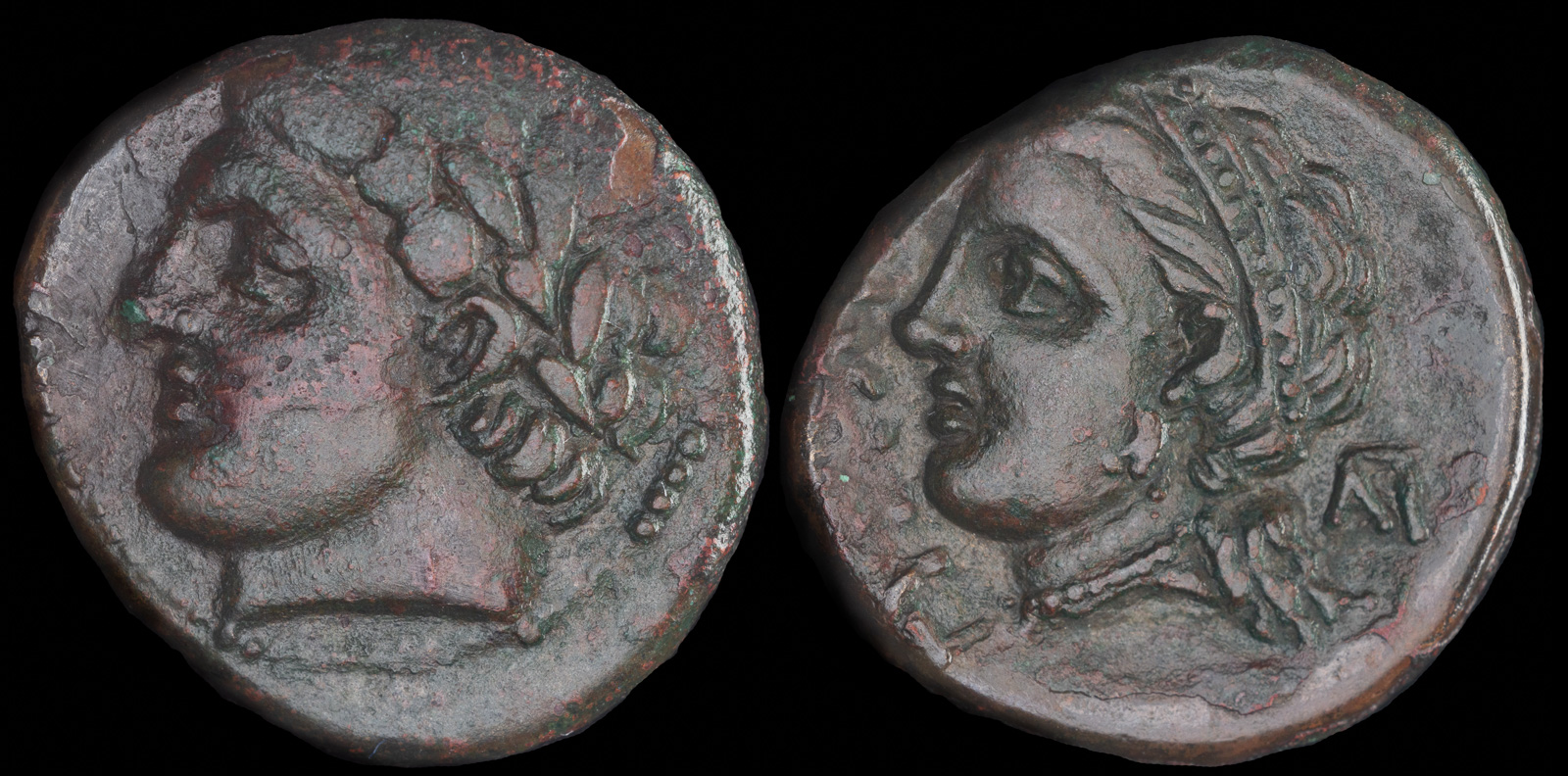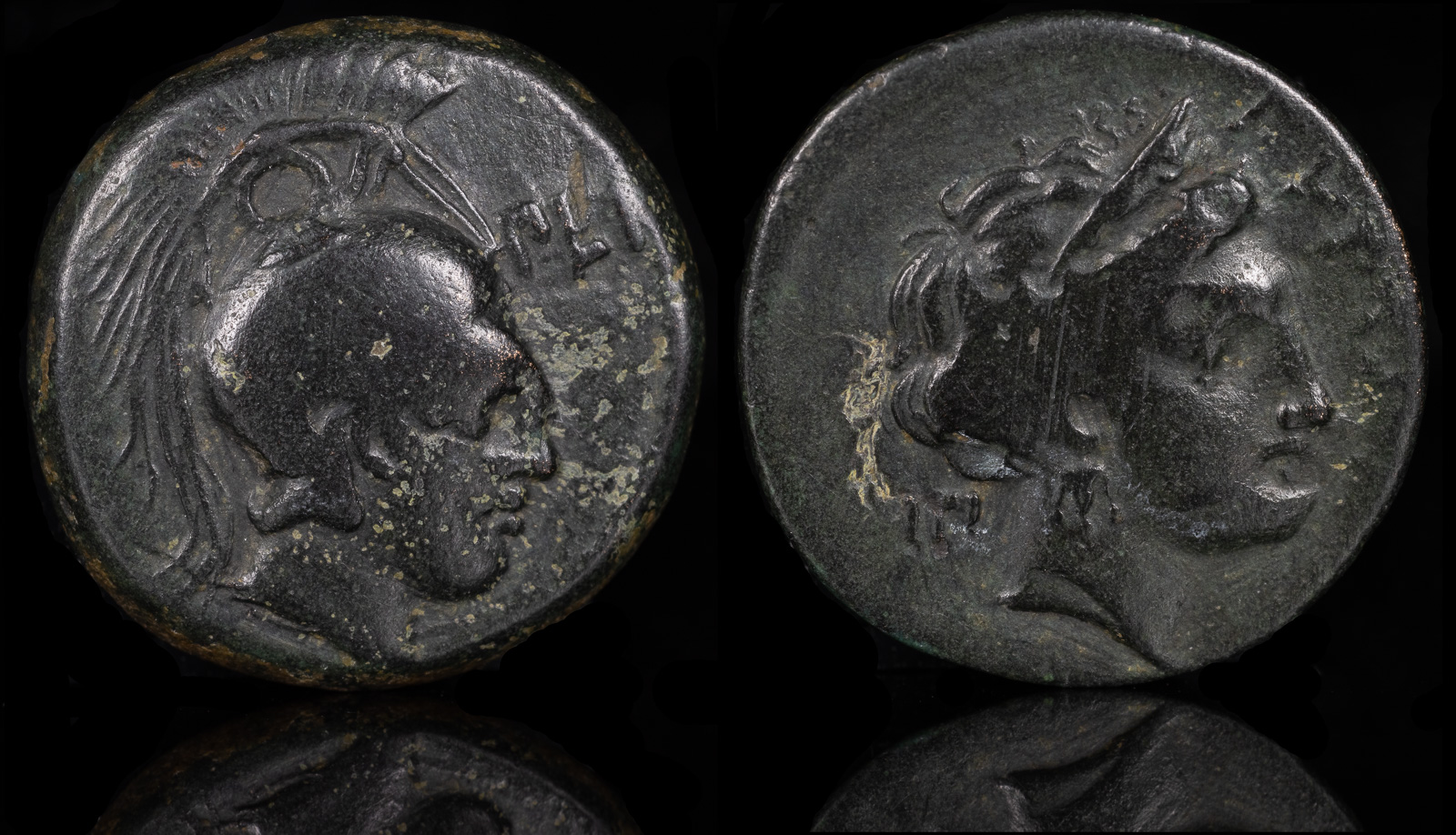
Gyrton, Thessaly
ca 340 – 320 BCE
Ae Trichalkon 20mm, 7.9g
Obv: Laureate head of Apollo (or the hero Gyrton) left
Rev: ΓYPTΩNIΩN; Head of the nymph Gyrtone left wearing diadem, earring and necklace; monogram behind
BCD Thessaly II 83.6
The legends differ on who exactly founded Gyrton. By some accounts it was Gyrton, brother of Phlegyas, who was a son of Ares and Chryse. By others it was Gyrtone, daughter of Phlegyas. Perhaps they could have avoided the issue had they chosen more original names.
This coin may shed some light on the matter. On the one side we have Ares, from whom Phlegyas descended. On the other we supposedly have Gyrtone, so it certainly seems that whoever minted this coin, and that person was presumably from Gyrton, felt it was Gyrtone. Of course, we’re not absolutely sure that’s Gyrtone, but we’ll stick to that story.
Per Strabo, the inhabitants were originally called Phegyaens, so that was a much simpler way of resolving it. He mentions the city multiple times, but always in the context of where it was. We know very little about how Gyrton functioned.
In later times, Heraklides of Gyrton was Philip V’s commander of Thessalian cavalry.

Thessaly, Gyrton
299-200 BCE
AE Trichalkon 8.16g, 22x19mm
Laureate head of Zeus left.
Horse priancing right, monogram below. ΓΥΡΤ/ΩΝΙΩΝ
BCD Thessaly II, 83.10
Ex CNG 2018
Ex BCD Collection

Thessaly, Gyrton
Circa 340-320 BCE
Æ 4.37g, 18mm, 6h
Pei- and (H)ip- magistrates. Head of Ares to right, wearing crested helmet; ΠEI horizontal before
Head of the nymph Gyrtone to right, wearing stephane and pendant earring; ΓYPTΩ[NIΩN] before, IΠ behind.
BCD Thessaly II 82.2 var. (ΠΕΙ downwards); HGC 4, 363
Ex J. Greiff Collection
Ex Roma